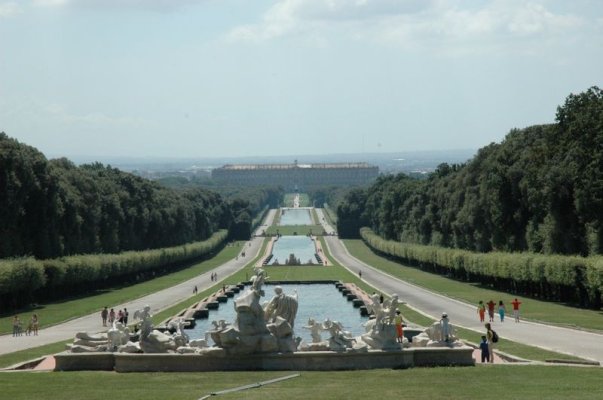Parco delle Alpi Marittime, the natural oasis loved by the Royal House of Savoy
CUNEO. The Maritime Alps Nature Park is among the most extensive protected areas in Italy. Numerous peaks over 3,000 meters, lakes, grasslands, small glaciers, the abundance of alpine fauna and botanical species constitute a unique environmental heritage. Twinned with the French National Park of Mercantour since 1987, it protects an area, straddling the Alps, of 100,000 hectares which, in 1993, obtained the European Diploma for the environment. The Park was born in 1995 from the union of the Park from the Argentera and the Reserve of the woods and lakes of Palanfrè, those that were once the hunting areas of the House of Savoy. In fact, the beauty of these mountains, the wealth of chamois, trout and a splendid and luxuriant vegetation struck Vittorio Emanuele II with force, when in 1855 the king of Sardinia visited the Gesso Valley and its thermal baths. His appreciation did not go unnoticed, and the mayors of the Municipalities of the upper valley, well aware of his hunting passion and the advantages that would derive from a summer presence in the area of the royal family, decided to give the king the rights to hunt and fish on much of their territory. Thus the Royal Hunting Reserve was born.
There are three valleys in the Park - the Gesso, Stura and Vermenagna valleys - and five Municipalities involved: Aisone, Entracque, Roaschia, Valdieri, Vernante. The heart of this protected area and its symbol is the crystalline massif of Argentera-Mercantour where the Maritime Alps culminate with the 3,297 meters of the Cima Sud dell'Argentera. The Maritimes are bold and severe mountains, whose rocky walls fall with great differences in height, carved by narrow and deep valleys and their slopes hide spectacular glacial cirques, over 80 lakes at the height of an unreal blue and the remains of the southernmost glaciers in the Alps .
The variety of floristic species present, counted in about two thousand species, equivalent to about a quarter of the entire Italian flora, is exceptional. Only in this area do some endemic plants grow impossible to find in the rest of the world such as the Saxifraga from the Argentera, the Viola valderia and the Primula di Allioni. The presence of fauna is also varied and rich: chamois, ibex and marmots are frequent encounters along the paths of the Park. Between the end of the 1990s and the beginning of the third millennium the wolf also made its natural return to these harsh valleys, a sort of "quality seal" of an intact and vital alpine environment.
The hiking network, which includes over 400 kilometers of signposted routes, allows you to immerse yourself in the nature of the Park along paths, mule tracks and military roads that are authentic masterpieces of naturalistic engineering. Ten cozy mountain huts and seven spartan bivouacs allow you to experience the mountains at high altitude for mountaineers and hikers. Crossed and inhabited for centuries, the Maritime Alps bear the marks of a recent history: the ancient abandoned villages that witnessed the decline of the Alpine civilization; the hunting lodges and chalets built by the kings of the House of Savoy; military roads today have become peace paths.
All the numbers of the Park
7 glaciers, the southernmost of the Alps
80 glacial and 3 artificial lakes
24 peaks over 3000 meters
10 mountain huts at high altitude and 1 hiking hut
9 unmanaged bivouacs
more than 400 kilometers of marked trails
1800 superior plants present, which correspond to over 30% of those of the Italian flora.
10 small area endemisms (found only in the Maritimes)
40 species of orchids of about 90 present in the national territory
780 species of mushrooms
140 species of lichens, which correspond to 12% of the species known for Piedmont
1 botanical garden "Valderia" at the Terme di Valdieri
80% of the woods that cover the slopes of the mountains are made up of beech
5% of forest area occupied by conifers: silver and red fir, larch, stone pine, hooked and mountain pine
1 Wildlife center: "Men and Wolves" wildlife center of Entracque
4000 chamois (average figure 2015)
760 ibexes (average figure 2015)
6 species of ungulates present: chamois and ibex, roe deer, wild boar, deer and mouflon
3 packs of wolves that frequent the Park territory
20 species of bats surveyed, representing three quarters of the species known for Piedmont
201 species of birds observed; among these a hundred are nesting
63 species of birds considered a priority for Europe, including 8 nesting species of birds of prey
3 species of alpine galliformes: white partridge, mountain pheasant and rock partridge
9 pairs of golden eagles
41 bearded vultures released between 1993 and 2012 on the release site of the Maritime Alps-Mercantour
5 fish species that live in some lakes and in watercourses: brown trout, marble trout, rainbow trout, bullhead and sanguinerola.
9000 species of invertebrates, of which 30 are new to science
300 species of spiders, 2 of which are new to science
3 prehistoric sites: caves of Aisone, caves of the Bandito (Municipality of Roaschia), necropolis of Valdieri
1 didactic archeopark
1 Ecomuseum: Ecomuseum of rye in Sant’Anna di Valdieri
3 former hunting lodges of the House of Savoy
100 artifacts of military origin (bunkers, barracks, ...)
1 hydroelectric plant, among the most powerful in Europe
Parco delle Alpi Marittime, l’oasi naturale amata dai Savoia – PiemonteTopNews


